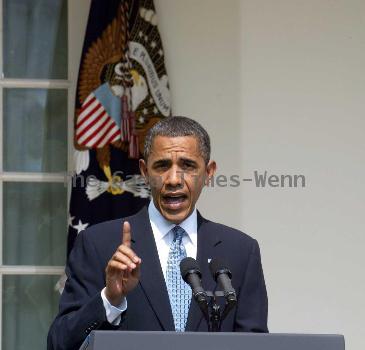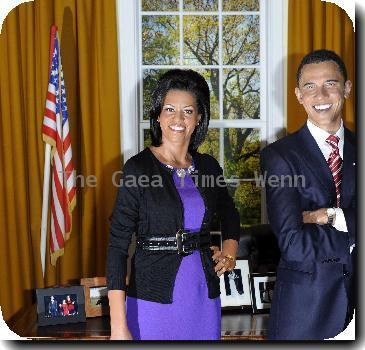Oil platform explodes, catches fire off La. coast; all 13 crew members are rescued from Gulf
By Alan Sayre, APThursday, September 2, 2010
Oil platform explodes off La. coast; crew rescued
NEW ORLEANS, La. — An oil platform exploded and burned off the Louisiana coast Thursday, the second such disaster in the Gulf of Mexico in less than five months. This time, the Coast Guard said there was no leak, and no one was killed.
The Coast Guard initially reported that an oil sheen a mile long and 100 feet wide had begun to spread from the site of the blast, about 200 miles west of the source of BP’s massive spill. But hours later, Coast Guard Cmdr. Cheri Ben-Iesau said crews were unable to find any spill.
The company that owns the platform, Houston-based Mariner Energy, did not know what caused the fire. Mariner Energy’s Patrick Cassidy said he considered the incident a fire, not an explosion.
“The platform is still intact and it was just a small portion of the platform that appears to be burned,” he said.
Mariner officials said there were seven active production wells on the platform, and they were shut down shortly before the fire broke out.
Jindal said the company told him the fire began in 100 barrels of light oil condensate, but officials did not know yet what sparked the flames.
The Coast Guard said Mariner Energy reported the oil sheen. In a public statement, the company said an initial flyover did not show any oil.
Photos from the scene showed at least five ships floating near the platform. Three of them were shooting great plumes of water onto the machinery. Light smoke could be seen drifting across the deep blue waters of the gulf.
By late afternoon, the fire on the platform was out.
The platform is in about 340 feet of water and about 100 miles south of Louisiana’s Vermilion Bay. Its location is considered shallow water, much less than the approximately 5,000 feet where BP’s well spewed oil and gas for three months after the April rig explosion that killed 11 workers.
Responding to any oil spill in shallow water would be much easier than in deep water, where crews depend on remote-operated vehicles to access equipment on the sea floor.
A Homeland Security update obtained by The Associated Press said the platform was producing 58,800 gallons of oil and 900,000 cubic feet of gas per day. The platform can store 4,200 gallons of oil.
White House press secretary Robert Gibbs said the administration has “response assets ready for deployment should we receive reports of pollution in the water.”
All 13 of the platform’s crew members were rescued from the water. They were found huddled together in life jackets.
The captain of the boat that rescued the platform crew said his vessel was 25 miles away when it received a distress call Thursday morning from the platform.
The Crystal Clear, a 110-foot boat, was in the Gulf doing routine maintenance work on oil rigs and platforms. When Capt. Dan Shaw arrived at the scene of the blast, the workers were holding hands in the water, where they had been for two hours. They were thirsty and tired.
“We gave them soda and water, anything they wanted to drink,” Shaw said. “They were just glad to be on board with us.”
Shaw said the blast was so sudden that the crew did not have time to get into lifeboats. They did not mention what might have caused the blast.
Crew members were being flown to a hospital in Houma. The Coast Guard said one person was injured, but the company said there were no injuries. All of them were released by early Thursday evening.
Jindal met with some of the survivors. He would not identify them except to say most were from Louisiana.
Environmental groups and some lawmakers said the incident showed the dangers of offshore drilling, and urged the Obama administration to extend a temporary ban on deepwater drilling to shallow water, where this platform was located.
“How many accidents are needed and how much environmental and economic damage must we suffer before we act to contain and control the source of the danger: offshore drilling?” said Rep. Frank Pallone, a New Jersey Democrat.
Mike Gravitz, oceans advocate for Environment America, said President Barack Obama “should need no further wake-up call to permanently ban new drilling.”
There are about 3,400 platforms operating in the Gulf, according to the American Petroleum Institute. Together they pump about a third of the America’s domestic oil, forming the backbone of the country’s petroleum industry.
Platforms are vastly different from oil rigs like BP’s Deepwater Horizon. They are usually brought in after wells are already drilled and sealed.
“A production platform is much more stable,” said Andy Radford, an API expert on offshore oil drilling. “On a drilling rig, you’re actually drilling the well. You’re cutting. You’re pumping mud down the hole. You have a lot more activity on a drilling rig.”
In contrast, platforms are usually placed atop stable wells where the oil is flowing at a predictable pressure, he said. A majority of platforms in the Gulf do not require crews on board.
Many platforms, especially those in shallower water, stand on legs that are drilled into the sea floor. Like a giant octopus, they spread numerous pipelines and can tap into many wells at once.
Platforms do not have blowout preventers, but they are usually equipped with a series of redundant valves that can shut off oil and gas at different points along the pipeline.
Numerous platforms were damaged during hurricanes Katrina and Rita. The storms broke pipelines, and oil spilled into the Gulf. But the platforms successfully kept major spills from happening, Radford said.
“Those safety valves did their job,” he said.
Industry representatives sought to minimize Thursday’s incident and distance it from the well blowout in April.
“We have on these platforms on any given year roughly 100 fires,” said Allen Verret, executive director of the Offshore Operators Committee.
Federal authorities have cited Mariner Energy and related entities for 10 accidents in the Gulf of Mexico over the last four years, according to safety records from the Bureau of Ocean Energy Management, Regulation and Enforcement.
The accidents range from platform fires to pollution spills and a blowout, according to accident-investigation reports from the agency formerly known as the Minerals Management Service.
In 2007, welding sparks falling onto an oil storage tank caused a flash fire that slightly burned a contract worker. The Minerals Management Service issued a $35,000 fine.
Mariner Energy Inc. focuses on oil and gas exploration and production in the Gulf. In April, Apache Corp., another independent oil company, announced plans to buy Mariner in a cash-and-stock deal valued at $3.9 billion, including the assumption of about $1.2 billion of Mariner’s debt. That deal is pending.
On Friday, BP was expected to begin the process of removing the cap and failed blowout preventer from its ruptured well, another step toward completion of a relief well that would seal the leak permanently. The Deepwater Horizon exploded April 20, setting off a three-month leak that totaled 206 million gallons of oil.
Associated Press writers Harry R. Weber, Michael Kunzelman and Janet McConnaughey in New Orleans, Chris Kahn in New York, Eileen Sullivan, Matthew Daly, Gerry Bodlander and Dina Capiello in Washington, Garance Burke in Fresno, Calif., and researcher Monika Mathur in New York contributed to this report.
Tags: Accidents, Barack Obama, Coastlines And Beaches, Energy, Environmental Concerns, Exploded, Explodes, Explosion, Explosions, Fires, Louisiana, Mariner Energy, New Orleans, North America, Personnel, Rig, Rig explosion, Sheen, United States, Vermilion bay, Water Environment







